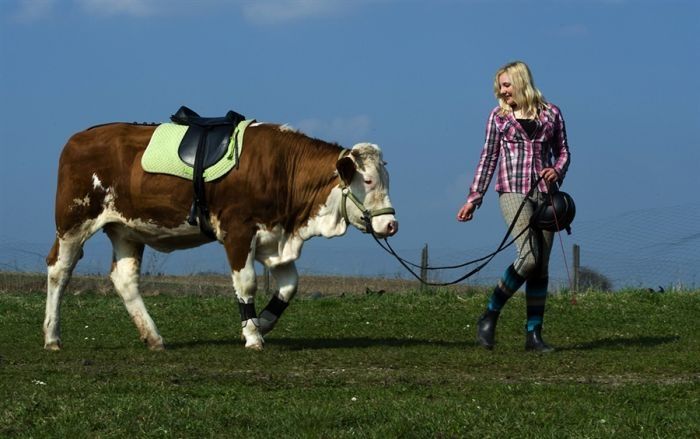|
|
Jumping Cow
|
To maintain high milk production, a dairy cow must be bred and produce calves. Depending on market conditions, the cow may be bred with a "dairy bull" or a "beef bull." Female calves (heifers) with dairy breeding may be kept as replacement cows for the dairy herd. If a replacement cow turns out to be a substandard producer of milk, she then goes to market and can be killed for beef. Male calves can either be used later as a breeding bull or sold and used for veal or beef. Dairy farmers usually begin breeding or artificially inseminating heifers around 13 months of age. A cow's gestation period is approximately nine months. Newborn calves are removed from their mothers quickly, usually within three days, as the mother/calf bond intensifies over time and delayed separation can cause extreme stress on the calf.
Domestic cows can live to 20 years, however those raised for dairy rarely live that long, as the average cow is removed from the dairy herd around age four and marketed for beef. In 2009, approximately 19% of the US beef supply came from cull dairy cows: cows that can no longer be seen as an economic asset to the dairy farm. These animals may be sold due to reproductive problems or common diseases of milk cows such as mastitis and lameness.
In India, the Hindu majority holds the cow as sacred and a motherly figure due to her capacity to give milk. Cow slaughter is banned in parts of India and remains a contentious issue in states where it is legal. Spent dairy cows don't go to slaughter, but are often seen as roaming on the city streets, and they die of old age or disease. Some pious Hindu organizations manage "old age homes" (Hindi: Goshala) for aged dairy cows.
|
|









